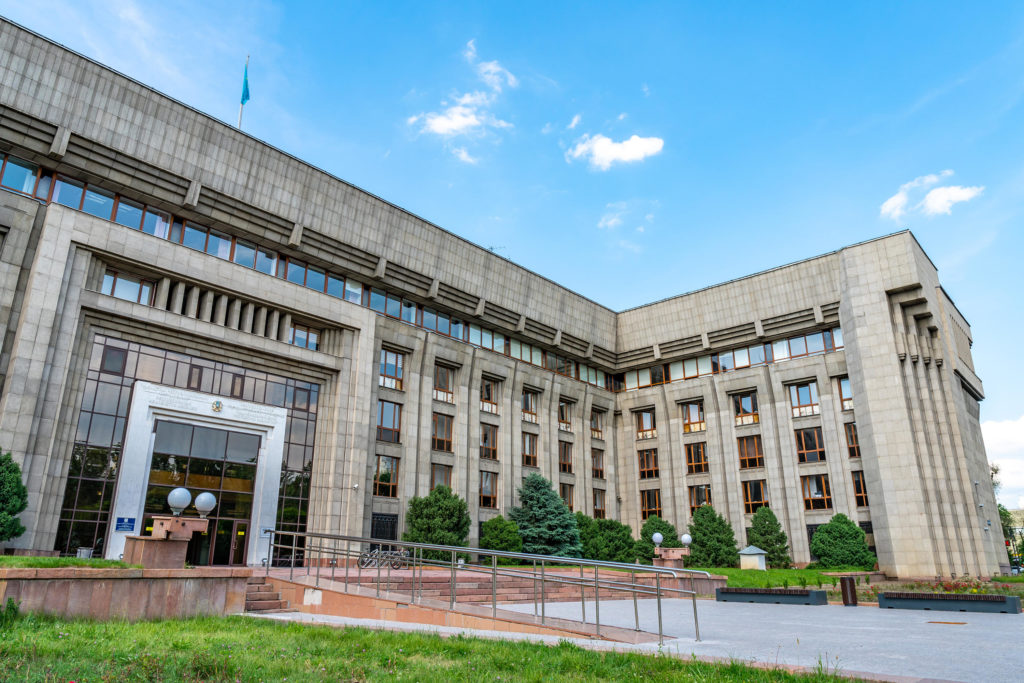NUR-SULTAN
Kazakhstan’s National Bank kept its key policy rate unchanged at 9.75 percent as inflation started to slow down.
The bank had been holding the rate for six months since cutting it by 50 basis points in July 2020, as it monitored inflationary pressures. In July 2021, the bank raised the rate to 9.25 percent, to 9.50 percent in September and to 9.75 percent in October.
The rate corridor was kept at plus or minus 1.0 percentage points, the central bank said. The rate on access operations to provide liquidity was set at 10.75 percent and the rate on access operations to withdraw liquidity – at 8.75 percent.
“The decision was made taking into account the observed signs of a slowdown in overall inflation, as well as increased uncertainty about a new strain of coronavirus – omicron and its impact on inflationary processes, external and internal demand,” the central bank said in a statement.
The bank said that as a result of the outstripping growth in demand over supply opportunities, the trend towards accelerating inflation in many countries persisted, despite the measures taken to curb price increases. In the countries – the main trading partners, with the exception of China, inflation forms at historic highs.
“Price growth in Kazakhstan is also at high levels. A slight slowdown in food inflation and inflation of paid services was offset by an acceleration in prices for non-food products,” the bank said.
“The increased inflationary expectations of the population reinforce the existing inflationary background. The domestic economy continues to actively recover against the backdrop of relatively high commodity prices and easing quarantine restrictions.”
The inflationary pressure from the external sector is reflected in the rise in domestic prices. At the end of November 2021, annual inflation in Kazakhstan slowed down slightly and amounted to 8.7 percent compared to 8.9 percent in October of this year. This dynamics was due to a slowdown in the growth of prices for food products from 11.3 percent to 10.9 percent and paid services from 6.9 percent to 6.4 percent.
Kazakhstan’s National Bank forecasts annual inflation in a range of 7.5-8.5 percent in 2021. It expects annual inflation to return to the target band of 4-6 percent in 2022.
Kazakhstan’s economy continued to grow and get closer to pre-pandemic levels in the first ten months of this year, supported by a strong performance in services, communications, construction and trade.
Gross domestic product (GDP) grew by 3.5 percent year-on-year in January-October with an oil price of $69.3 per barrel over the same period.
Mining and manufacturing, trade, construction, information and communications, transport and the public sector made positive contributions. Agriculture has a restraining effect on economic growth, which showed a decline in production in January-October. The main reason for this dynamics was the decline in the gross harvest of grain crops.
Kazakhstan projects its economic growth to reach 3.5-3.8 percent this year.
According to the World Bank’s latest projections, the economy is expected to grow 3.5 percent in 2021 followed by 3.7 percent growth in 2022, driven by the resumption of domestic activity, recovery in global demand for oil, continued fiscal support measures, and a successful national inoculation against the COVID-19 virus.
In July, the Asian Development Bank revised Kazakhstan’s economic outlook forecast upwards to 3.4 percent from 3.2 percent in 2021. The ADB said Kazakhstan’s 2022 growth forecast would stay at 3.5 percent.
By comparison, the International Monetary Fund said in October that Kazakhstan’s GDP was forecast to grow 3.3 percent in 2021 and 3.9 percent in 2022. Annual inflation is projected at 7.5 percent this year and 5.8 percent in 2022.

